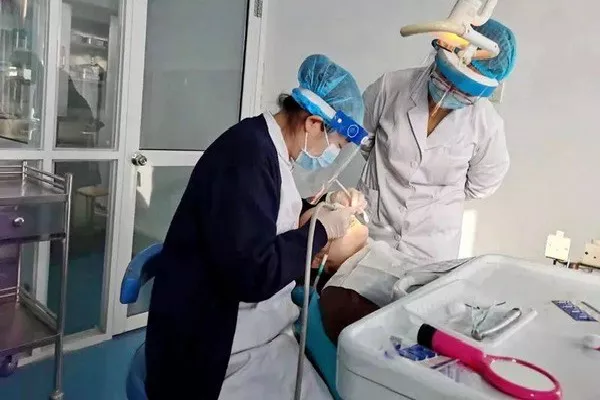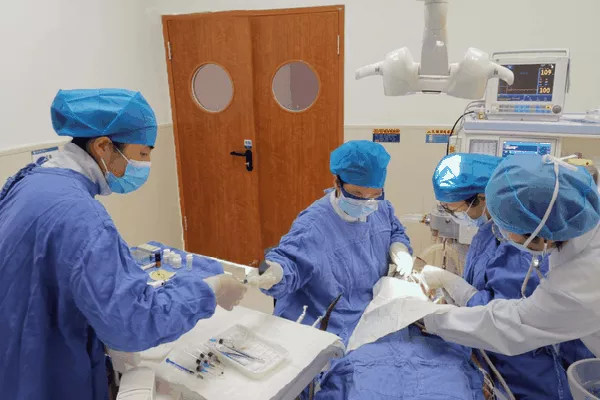Orthodontic expanders, also known as palatal expanders or simply “expanders,” are common orthodontic devices used to address issues related to dental crowding, misalignment, and bite problems. While these devices are effective tools in orthodontic treatment, some patients may experience discomfort or pain during the course of their treatment. In this article, we will explore why expanders may cause discomfort, how to manage it, and when to seek professional guidance.
Understanding Orthodontic Expanders
Before diving into the reasons behind expander-related discomfort, it’s essential to understand what orthodontic expanders are and how they work.
Orthodontic expanders are devices designed to widen the upper jaw (maxilla) or the lower jaw (mandible). They consist of a metal framework with a screw mechanism, which is attached to the patient’s teeth and/or palate. The primary goal of an expander is to create more space within the dental arch, allowing for proper alignment of teeth and correction of issues like overcrowding, crossbites, and narrow palates.
Why Expanders May Cause Discomfort
Experiencing some degree of discomfort or pain while wearing an orthodontic expander is not uncommon. Several factors can contribute to this discomfort:
Pressure and Tension:
The fundamental mechanism of an expander involves applying gentle pressure on the bones of the jaw and palate. This pressure is necessary for the device to achieve its goal of widening the dental arch. However, it can lead to soreness and discomfort as the bones gradually adjust to the new position.
Soft Tissue Irritation:
The metal components of the expander, such as bands or wires, can come into contact with the soft tissues of the mouth, including the cheeks, tongue, and palate. This contact can cause irritation and sore spots.
Initial Adjustment Period:
It’s common for patients to experience the most discomfort during the initial days or weeks of expander activation. This is when the pressure is most pronounced as the device begins to create space.
Tightening:
Orthodontists may periodically tighten or activate the expander by turning the screw mechanism. Each activation increases the pressure on the jaw and palate, potentially causing temporary discomfort.
Speech and Eating Changes:
Adjusting to speaking and eating with an expander can be challenging, which may cause some discomfort and frustration, especially initially.
Managing Expander-Related Discomfort
While expander-related discomfort is generally expected, there are ways to manage it and minimize its impact:
Pain Relievers:
Over-the-counter pain relievers, such as ibuprofen or acetaminophen, can help reduce soreness and discomfort. Always follow the recommended dosage instructions.
Orthodontic Wax:
Orthodontic wax can be applied to the metal components of the expander that may be causing irritation to the soft tissues. This can provide relief from sore spots and prevent further irritation.
Soft Diet:
Eating soft foods that require minimal chewing, such as yogurt, pudding, and mashed potatoes, can reduce discomfort when adjusting to eating with an expander.
Proper Oral Hygiene:
Maintaining good oral hygiene is crucial during expander treatment. Brushing and flossing regularly can help prevent additional discomfort or complications like gum irritation.
Follow Instructions:
Follow the instructions provided by your orthodontist regarding the activation schedule and care of your expander. Compliance can minimize discomfort and ensure the effectiveness of the treatment.
When to Seek Professional Guidance
While some level of discomfort is expected during expander treatment, there are situations where you should seek professional guidance from your orthodontist:
Severe or Persistent Pain:
If you experience severe or persistent pain that does not respond to over-the-counter pain relievers, contact your orthodontist immediately.
Excessive Irritation or Sores:
If the expander is causing excessive irritation or sores in your mouth, it’s essential to consult your orthodontist for adjustments or guidance on managing the issue.
Difficulty Eating or Speaking:
If you find it extremely challenging to eat or speak, or if these issues persist beyond the initial adjustment period, consult your orthodontist for assistance.
Loose or Damaged Components:
If any part of the expander becomes loose or damaged, contact your orthodontist promptly for repair or replacement.
Conclusion
Orthodontic expanders are valuable tools in orthodontic treatment, but they can cause discomfort as the jaw and palate adjust to their new positions. Understanding the reasons behind expander-related discomfort and knowing how to manage it can help make the treatment process more tolerable. If you have concerns about the level of discomfort you are experiencing or encounter any issues with your expander, don’t hesitate to reach out to your orthodontistfor guidance and support. Remember that the discomfort associated with expanders is temporary, and the end result—a beautifully aligned smile—is well worth the effort.
Related Topics:






























